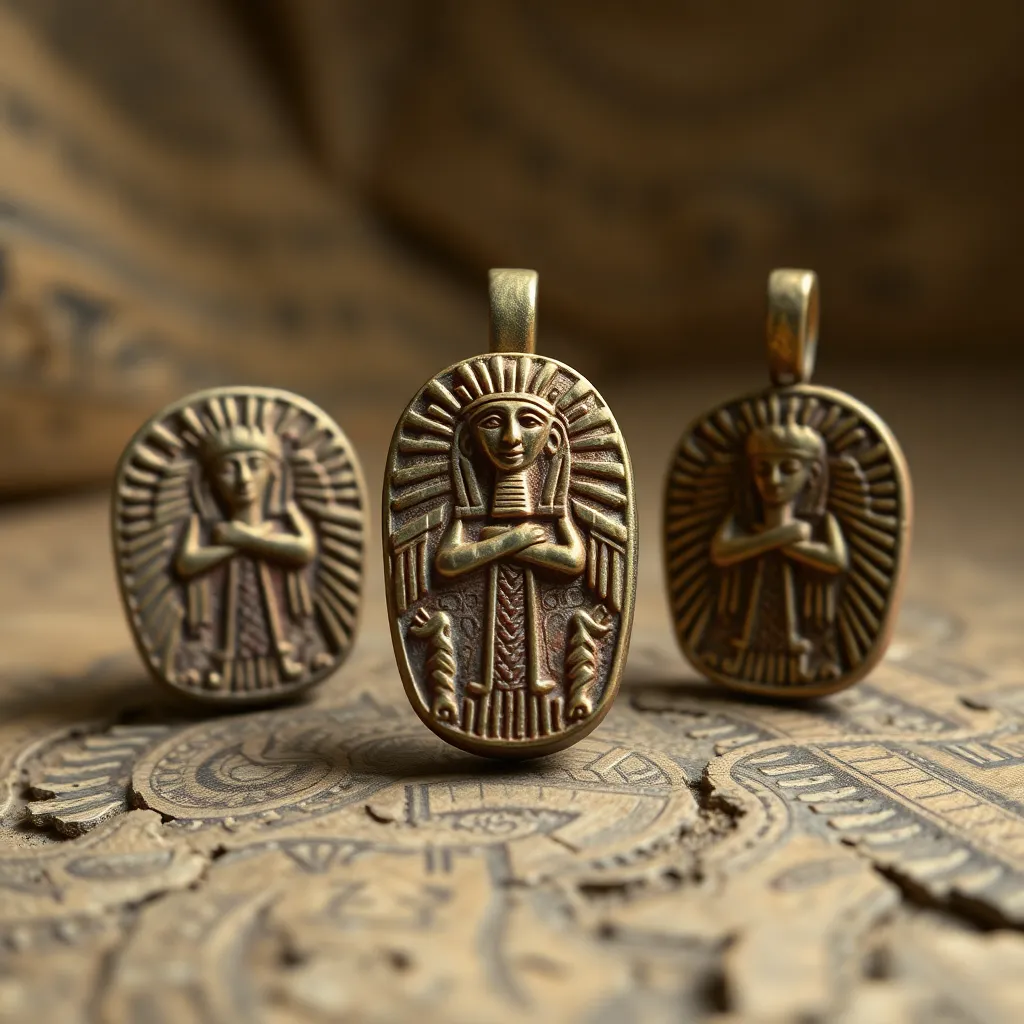The Influence of Amulets on Modern Egyptian Practices
I. Introduction
Amulets are objects that are believed to have protective or magical properties, often worn or carried to provide protection against misfortune, illness, or evil spirits. Historically, amulets have held significant meaning in various cultures, particularly in ancient Egypt, where they were integral to religious and daily life.
In modern Egypt, the use of amulets persists, reflecting a blend of traditional beliefs and contemporary practices. This article aims to explore the enduring influence of amulets on Egyptian culture, examining their historical roots, current applications, and the sociocultural implications in today’s society.
II. Historical Background of Amulets in Egyptian Culture
Amulets have been a part of Egyptian culture for thousands of years, deeply intertwined with their religious beliefs and practices. Ancient Egyptians believed that these objects could provide divine protection, offer healing, and even ensure a safe passage to the afterlife.
A. Ancient Egyptian beliefs and practices surrounding amulets
Amulets were often inscribed with spells or symbols from the Egyptian pantheon, such as:
- **Ankh**: Symbolizing life
- **Eye of Horus**: A protective symbol
- **Scarabs**: Representing rebirth and regeneration
These items were commonly placed within tombs, worn by the living, or used in various rituals to invoke protection from deities.
B. Evolution of amulet use through different historical periods
Over the centuries, the use of amulets evolved. During the Pharaonic era, they were crafted from precious materials like gold and lapis lazuli. In later periods, especially under Greco-Roman influence, the materials diversified, incorporating glass and other semi-precious stones.
C. Key symbols and materials associated with traditional amulets
Key symbols often found on amulets include:
- **Djed Pillar**: Representing stability
- **Lotus Flower**: Symbolizing rebirth and purity
- **Sistrum**: Associated with music and fertility
Materials such as faience, stone, and metal were commonly used, each believed to possess specific magical properties.
III. The Role of Amulets in Contemporary Egyptian Society
In contemporary Egypt, amulets continue to play a significant role in the lives of many people.
A. Common types of amulets used today
Modern amulets vary in form and function. Some prevalent types include:
- **Hijab Amulets**: Worn by women for protection and blessings
- **Warding Off Evil Eye**: Often used to protect children
- **Health Amulets**: Believed to promote well-being and safety
B. Contexts in which amulets are employed
Amulets are employed in various contexts, including:
- **Health**: Used to ward off illness or promote recovery
- **Protection**: Believed to shield individuals from negative energies or harm
- **Luck**: Carried to attract good fortune and success
C. Demographics of amulet users in modern Egypt
Amulet use spans across demographics, including various age groups, socioeconomic backgrounds, and religious affiliations. Both urban and rural communities maintain traditional practices, making amulets a common cultural thread in Egypt.
IV. Amulets in Religious and Spiritual Practices
The intersection of amulets with religious practices is profound in modern Egypt, where Islam and Coptic Christianity coexist.
A. Intersection of amulets with Islam and Coptic Christianity
Muslims and Christians in Egypt utilize amulets for spiritual protection and blessings, often incorporating verses from the Quran or biblical texts.
B. The role of amulets in rituals and religious ceremonies
Amulets are often integral to various rituals, such as:
- **Weddings**: Used to ensure prosperity and happiness
- **Childbirth**: Amulets are given to newborns for protection
- **Funerals**: Placed with the deceased to safeguard their journey to the afterlife
C. Influence of folk beliefs and practices on amulet use
Folk traditions significantly influence how amulets are perceived and used in everyday life, blending ancient customs with modern beliefs.
V. Amulets and Identity in Modern Egypt
Amulets serve as powerful symbols of cultural identity and heritage in modern Egypt.
A. Amulets as expressions of cultural identity and heritage
For many Egyptians, wearing or carrying amulets signifies a connection to their historical roots and cultural legacy.
B. The role of amulets in the lives of immigrants and diaspora communities
Among Egyptian immigrants and diaspora communities, amulets often embody nostalgia and a sense of belonging, representing ties to their homeland.
C. Generational transmission of amulet traditions
Amulet practices are typically passed down through generations, with families imparting the significance and stories behind specific amulets to their children.
VI. The Commercialization of Amulets
The commercialization of amulets has transformed their availability and perception in modern society.
A. Market trends and the rise of amulet vendors
With the growing interest in spirituality and traditional practices, the market for amulets has expanded, with vendors selling a variety of amulets in local markets and online.
B. Online platforms and social media’s impact on amulet sales
The rise of e-commerce and social media has facilitated the sale of amulets, allowing artisans and vendors to reach wider audiences through platforms like Facebook and Instagram.
C. Ethical considerations in the commercialization of spiritual practices
This commercialization raises ethical questions about the exploitation of cultural beliefs and the authenticity of amulet practices.
VII. Psychological and Sociological Perspectives
The psychological and sociological implications of amulet use are noteworthy.
A. The psychological effects of amulet use on individuals
Wearing amulets can provide individuals with a sense of comfort and security, impacting their mental well-being positively.
B. Sociological implications of amulet rituals in community settings
Amulet rituals often foster community bonding, creating shared experiences and collective identity among participants.
C. Case studies illustrating the significance of amulets in modern life
Numerous case studies highlight how individuals attribute significant meaning to amulets, often sharing personal stories of protection and success linked to their use.
VIII. Conclusion
In summary, amulets remain a vital component of Egyptian culture, bridging ancient traditions with contemporary practices. They serve not only as protective objects but also as symbols of identity, belonging, and community.
The enduring significance of amulets in Egypt reflects the resilience of cultural practices in the face of modernization. As society evolves, so too will the roles and meanings of amulets, potentially leading to new interpretations and uses in the future.




